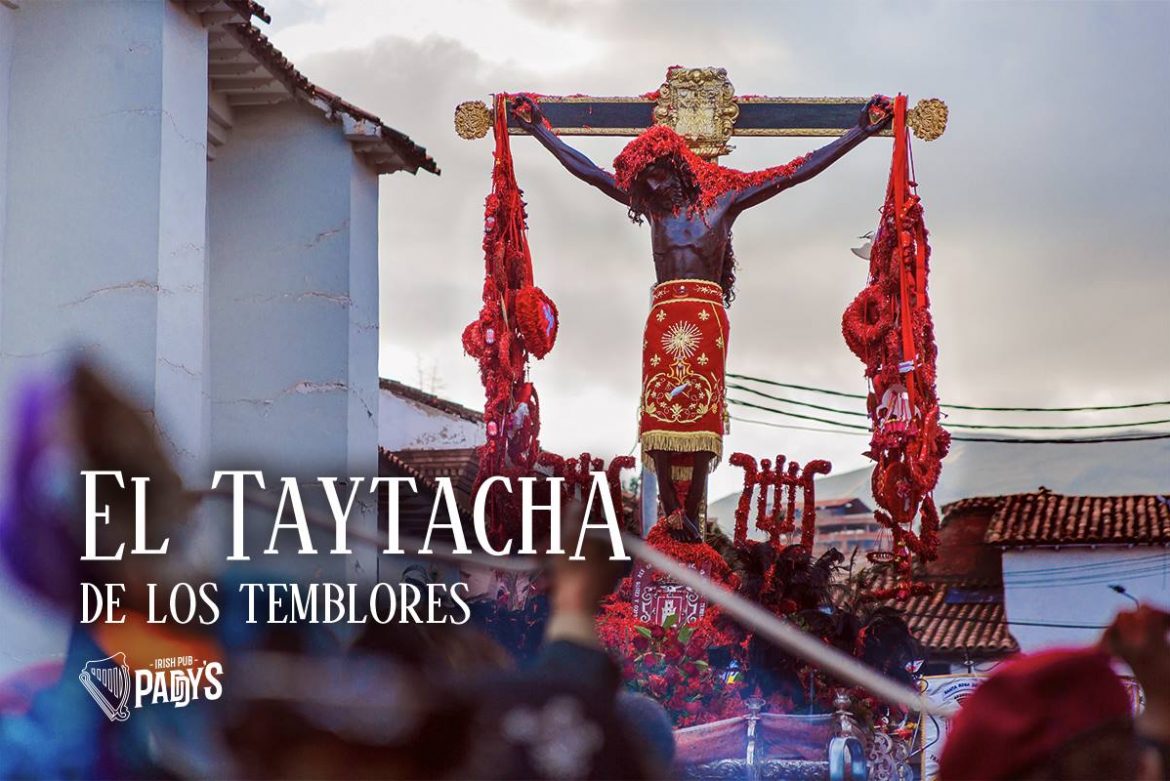Taytacha de los Temblores – Holy Week
The Andean religion safeguarded myths, symbols and images, which have survived the colonialism. The divinities of the past are nowadays manifested in the popular faces of different gods and saints. The polytheism of the old Peru has been transferred into our current religion and that is the topic of this small text. We will approach the Incan worldview and the great expression of its cultural resistance, such as the devotion to the Señor de los Temblores (Lord of the Earthquakes), whose image is in the Cathedral in Cusco.
To get to the root of this believe, we have to go back to a historical and crucial event of the city, to the earthquake in 1650. The emperors imposed the country militarily but also religiously and in that context arrived the Bishop Manuel de Mollinedo y Angulo in 1673. His arrival coincided with the reconstruction after the devastating earthquake of 1650, to this time the worship of the image of this crucified Christ is attributed, until then he was known as Señor de la Buena Muerte (Lord of the Good Death), who is credited with having calmed the ground motion. Bishop Mollinedo studied the culture of Cusco profoundly. Being also a well-known patron, he understood the spirituality of the Andean population who he boldly tried to introduce into Catholicism. The concordance of ritual dates according to astronomical movement, as for example Inti Raymi and Corpus Christi, provided an unprecedented event in the extirpation of idolatries, -where the sword had been imposed next to the cross-, known as the “transfer of spirits”.
This occurrence has been portrayed by Jesús A. La Torre in the following way: “In front of the images of each saint and virgin, they put the gods, mummies, idols and other deities that the Incas had … then he began with the transfer ceremony … chanting prayers he approached the largest and most luxurious deity, which was Pachacamac, then he raised a rack that they had accommodated there and from there he addressed the village and told them: As from this moment … I will transfer the spirit of this deity that is your God, to this Holy Image … Spirit of Pachacamac, as from this moment you will rest in peace and for all eternity inside this holy image! Spirit of Pachacamac … come out and leave this impure body, enter and take possession of this holy and sacred body of the Lord of the Earthquakes! ”
For the Inca culture, Pachaqamaq is the Andean god, creator of space, time, nature, the world and the universe. Therefore seismic movements and earthquakes are attributed to him.
These historical references could affirm that Pachakamaq is the Lord of the Earthquakes. Additionally between 1673 (date of the arrival of Bishop Mollinedo) and 1675, (date of the Colonial Corpus Christi paintings attributed to Diego Quispe Tito), this transfer of spirits must have taken place. Given the fact that since 1675 the surviving Incas and the population of Cusco participated actively and sumptuously at the celebration.
Regarding the worship of the Lord of the earthquakes and his relationship with Pachaqamaq we can conclude the following: The religion that is practiced nowadays in the Andes is the pre-hispanic mainstream religion. The people accepted the catholic and ecclesiastical structure before having to witness the destruction of the Incan religious system, executed at the time by the ruling elite, the high priests, their poets, theologians and thinkers. Beyond those celebrations the daily religious routine of businessmen, farmers or pastors are focused on their devotion to Pachamama and the protective apus (holy montains). The Catholic and Andean religions are maintained parallel, at the ritual space of Haukaypata the procession starts off a Catholic festival with Christian images that also represent old Peruvian deities. At these festivals music, dance, food and drinks are fundamental.

